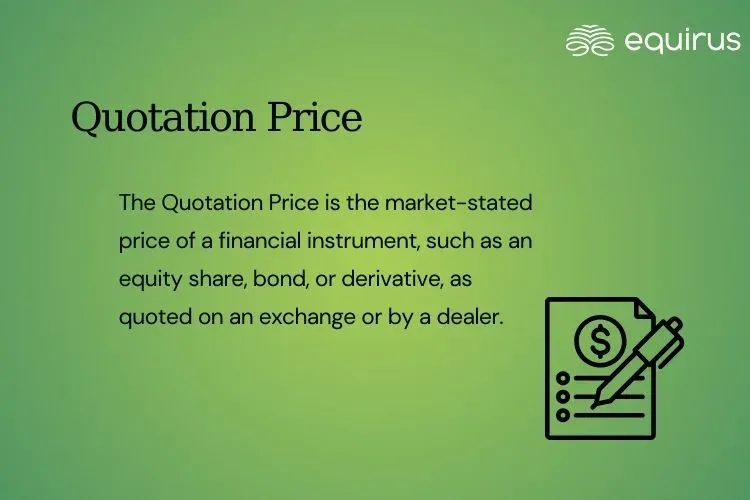Quotation Price

Key Highlights
-
The Quotation Price is the market-stated price of a financial instrument, such as an equity share, bond, or derivative, as quoted on an exchange or by a dealer.
-
Key features includes bid and ask representation, exchange-determined, standardized for bonds and fixed income and time sensitivity.
What is Quotation Price
The Quotation Price is the market-stated price of a financial instrument, such as an equity share, bond, or derivative, as quoted on an exchange or by a dealer. It reflects the value at which the instrument is available for buying or selling and serves as an essential reference for investors, traders, and institutions in capital market transactions.
Key Features of Quotation Price
-
Bid and Ask Representation: Indicates both the highest price a buyer is willing to pay (bid) and the lowest price a seller is willing to accept (ask).
-
Exchange-Determined: In equities and derivatives, the quotation price is updated in real-time based on market demand and supply.
-
Standardized for Bonds and Fixed Income: In debt markets, the quotation price may be expressed as a percentage of the bond’s face value or in yield terms.
-
Time Sensitivity: Reflects the most recent market conditions, which may shift rapidly with trading activity.
Applications in Financial Markets
-
Equities: Used by institutional investors and traders to execute buy or sell orders with precision.
-
Fixed Income: Quotation prices guide investors in assessing yields, spreads, and market value of corporate or government bonds.
-
Derivatives: Helps in evaluating premiums for options, futures pricing, and structured products.
-
Investment Banking: Plays a role in pricing securities during IPOs, secondary offerings, private placements, and block trades.
Importance for Investors
-
Valuation Benchmark: Acts as a reference point for determining the current market value of securities.
-
Transparency: Ensures clarity in pricing and promotes fair market practices.
-
Decision-Making Tool: Enables portfolio managers and institutional investors to assess entry and exit points in the market.
-
Risk Management: Facilitates monitoring of market exposure and supports hedging strategies.
